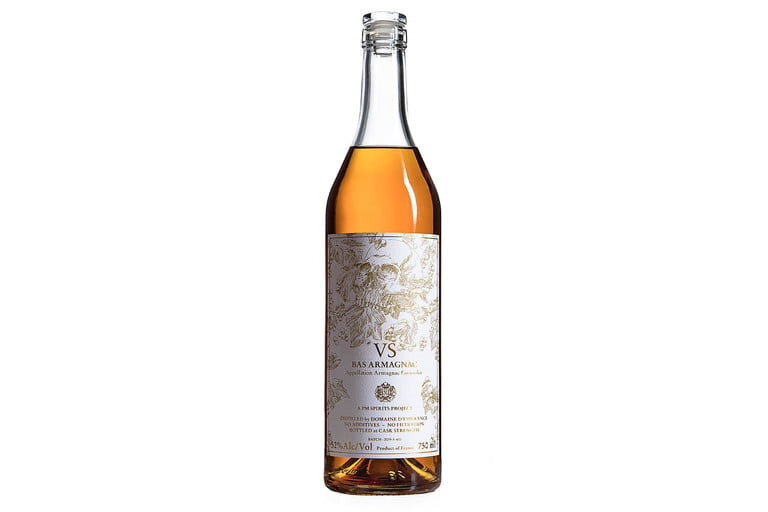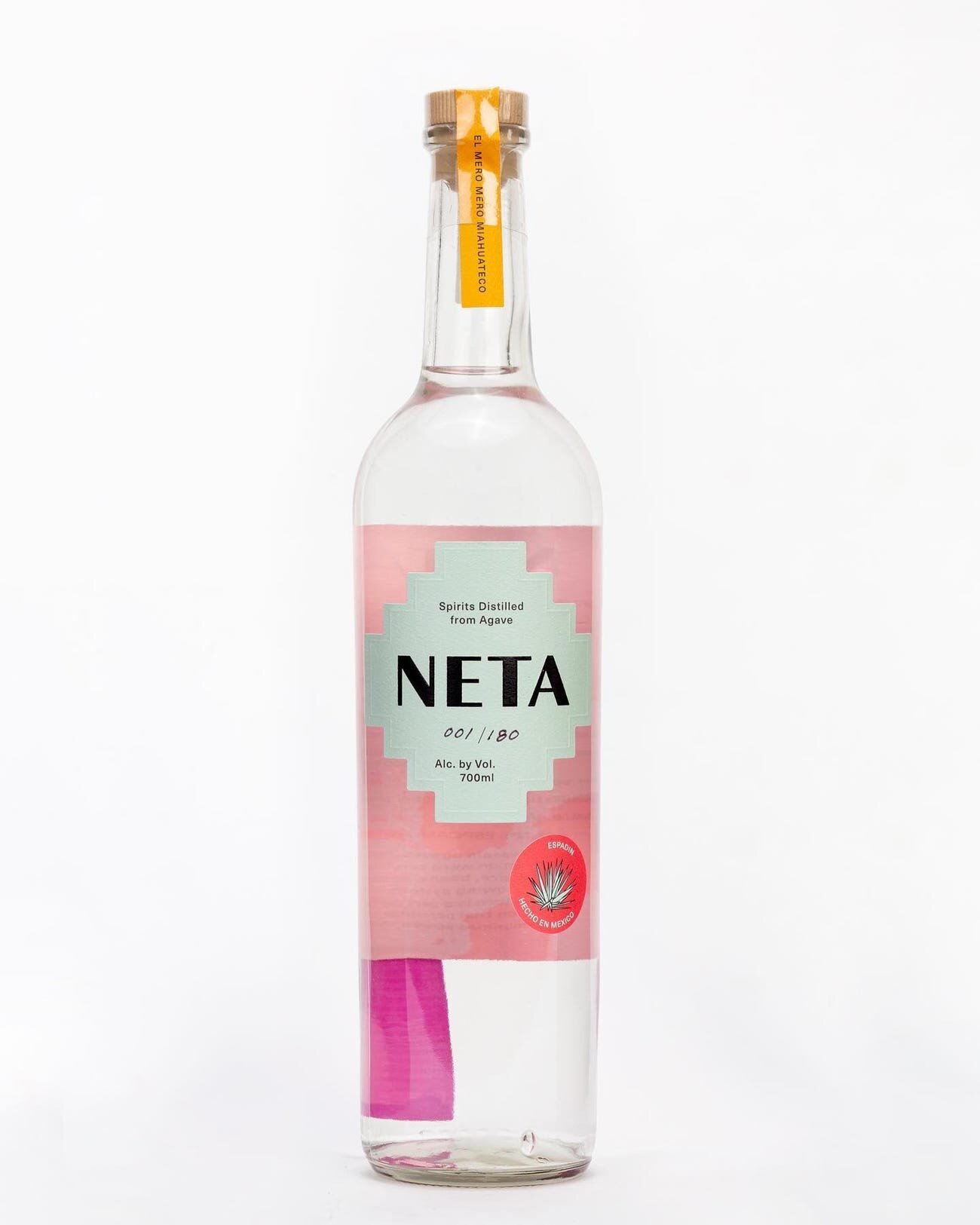“...Hommage a Yves & Jean-Noel Pelletan, the rare cask-strength Cognac, has a boldness that belies the softly nuanced quality its category is known for.”
Best of,L'Encantada,L'Encantada,L'Encantada
The 25 Best Bourbons of the 21st Century (So Far)
Best of, Mic.Drop., PM SpiritsBourbons have become increasingly collectible. Here are the ones you need to stash away.
There’s much to love about the world’s great Japanese, Scotch and Irish whiskey distilleries. But when it comes to innovation, the wily bourbon producers in the United States have been leading the way for years. In Kentucky and beyond, purveyors of America’s native spirit have refused to let the excellence of their existing products stand in the way of coming up with new ones. And over the last decade and a half, a plenitude of incredible new whiskey with a mash bill of at least 51 percent corn and aged in charred new oak barrels—the house rules for a whiskey to be called a bourbon—has come to market, some from brand-new producers, others new expressions from venerated houses. Fortunately, we’ve got you covered. Here are 25 of the best bourbon releases of the last 20 years.
Mic.Drop.
A delicious blend of 20 different casks of eight-year-old whiskey that offers multifarious flavors highlighted by maple syrup, coconut, cloves, and dark fruit. Mic.Drop. came out of nowhere in 2017 and now resides on the back bars of some of the country’s most prestigious drinking establishments. It’s easy to spot, too, with an eye-catching label designed by comic book artist Chris Batista. The follow up, Mic.Drop.2, was released in 2018 —140 bottles at $450 a pop.
https://robbreport.com/food-drink/spirits/best-bourbons-21st-century-2817790/
The 9 Best New Rums to Drink Right Now
Best of, Rum, Rhum, PM Spirits, Robb ReportSpirits worth sipping.
Distilled from cane juice rather than molasses, rhum agricole is a different beast from standard rum, with a distinctly grassy, vegetal flavor profile. Cane-based rum can be produced anywhere, but the best-known expressions come from the French Caribbean. Pere Labat is from Guadeloupe’s Distillerie Poisson, the oldest distillery on the island of Marie-Galante. The un-aged rum, distilled to the high-octane “local proof” at which the natives like to drink it, is powerfully vegetal on the nose but much less so on the palate, where it displays notes of vanilla and mint in addition to the classic agricole grassiness. It’s surprisingly easy to drink neat or on the rocks and makes for a great change of pace in a daiquiri.
https://robbreport.com/food-drink/spirits/best-new-rum-fall-2020-buyers-guide-1234573133/
A Whiskey Unicorn for Every Taste
Armagnac, L'Encantada, PM Spirits“Finally got to try my unicorn bourbon!” wrote one woman on a dedicated whiskey Facebook group in late July, uploading a selfie where she proudly displayed a bottle of Blanton’s Bourbon.
It didn’t take long for the resident whiskey geeks to, at the same time, question and criticize her argot.
Responded one man, sarcastically: “Who would [have] thought a 6-year bourbon at 93 proof is now a unicorn?”
While I likewise lament the current fervor for once-common bottles, Blanton’s is, in fact, a unicorn, if only because enough whiskey drinkers pursue it as if it were. Even if it’s not exceedingly rare and is debatable in quality, it nevertheless offers many of the criteria that construct the anatomy of today’s unicorns—allocated, boldly packaged, price-gouged.
There are, of course, different breeds of whiskey unicorns, some more rarely encountered than others. These days, most fall into the American whiskey category—consisting of Kentucky bourbon and rye— and, in the smallest genus of the unicorn kingdom, are almost always Buffalo Trace products. Similarly, any Japanese whisky from the Suntory distillery is immediately exalted to unicorn status in the United States—owing in part to a track record of truly sublime releases, coupled, I suspect, with the perceived exoticism of the hiragana characters on the labels. As is some Scotch, especially if it is jaw-droppingly expensive and packaged in such an ornamental fashion that it seems to signal it’s more an object to look upon than to drink. These days, after all, becoming a unicorn only partially relies on how a spirit tastes.
Here are 10 categories of unicorn whiskey you’ll likely chance upon while out hunting.
L’Encantada Armagnac, 1996
The Non-Whiskey Whiskey Collector Unicorns
Examples: Foursquare rum, L’Encantada Armagnac, Clase Azul tequila, Don Julio 1942 tequila
While many whiskey drinkers have a rigidly monogamous relationship with the spirit, there are certain offerings that might entice them to cross over. Typically, this occurs only when those products happen to taste just like top-notch whiskey—well-oaked caramel and vanilla bombs. Some, like the Sazerac-owned
L’Encantada Armagnac, 1979
Corazón tequila, are themselves aged in unicorn whiskey barrels, including George T. Stagg and Old Rip Van Winkle, for example. The producers of these spirits have even begun playing to the free-spending whiskey geek, offering cask-strength, single barrel releases (perfect for sticker labels) in handsome packages and, naturally, in limited supply.
https://punchdrink.com/articles/rare-collectible-whiskey-unicorn-for-every-taste/
What is Armagnac? Exploring Cognac’s Older Cousin
Armagnac, cognac, DOMAINE D’AURENSEN, Domaine d’Esperance, DOMAINE D’ESPÉRANCE, L'Encantada, PM SpiritsHow Armagnac is Made
“Essentially, Cognac is more like Tequila, and Armagnac is more like mezcal in the way it’s produced,” says Nicolas Palazzi, owner of importer and distributor, PM Spirits, “but not in flavor [although it can occasionally share similar notes with the agave spirit].” Armagnac is a bit more artisanal in nature, and every producer creates a product to their own proof and style making it a fan favorite for spirit nerds.
Armagnac is allowed to use 10 grape varieties in production, but typically only use four: Ugni blanc, Baco, Folle Blanche, and Colombard; whereas in Cognac they use around 99% Ugni blanc. More variety in the raw material allows for Armagnac to express a diversity in flavor that Cognac cannot. When you also consider the terroir — the soil, climate, and hand of the maker — Armagnac truly distinguishes itself in character.
“There is something really interesting in picking grapes and making a product that has a true personality and seeing that product at a stage where it hasn’t become a very popular spirit [like Cognac] that has been modified to try to appeal to the general public,” says Palazzi. “Armagnac is very terroir-driven, it feels like you can connect with the history of the land and its rich history.”
In terms of distillation, 95% of Armagnac production is distilled with an alembic column still, whereas Cognac has to be pot-distilled, Palazzi notes. “Some are using pot still as well,” he says, although it’s a rarity.
After being distilled, the liquid is typically aged in 400-liter French oak casks — typically local, Gascony oak — and is then classified as VS, VSOP, Napoleón, or XO (Hors d’âge), depending on how long it has been aged for, with XO being the oldest age statement meaning the distillate has seen a minimum of 10 years in the cask. It’s also common for Armagnac producers to release vintages, like wine, but this will be more of a rarity as the category continues to rise in popularity.
After aging, the Armagnac is either bottled at cask strength, or proofed down. “The reason why Cognac is typically 40% ABV is to stretch out the amount they’re able to produce because of the demand,” Palazzi notes. “In Armagnac, you’ll find more full-proof bottling because they aren’t under the pressure of hitting numbers so they can focus on creating the best product possible [regardless of proof].” This means that each bottle will have its own distinct character, which isn’t always the case with other brandies.
Some producers to note are: Domaine Boignères, Château de Pellehaut, Domaine Espérance, Domaine d’Aurensan, but there are many others creating exceptional brandies as well in the region.
Cobrafire Eau-de-Vie de Raisin
An unaged blanche (white) Armagnac produced in the Bas Armagnac sub-appellation. It’s an undiluted, unadulterated expression of exactly what a French brandy should taste like. At 51.5% ABV, it’s also begging to make it into your next Martini.
PM Spirits VS Bas Armagnac Overproof
Importer PM Spirits teamed up with renown production house, Domaine Espérance, to release their own label of VS overproof (51.7% ABV) Armagnac. For the price you’ll pay, it’s an absolute steal and must-try.
Ten Outstanding Cognacs That You Have Probably Never Heard Of
Best of, Jacky NavarreCognac is one of the world’s great spirits. Its history dates back almost four centuries. Its presence in the U.S. goes back almost as long. It has been intimately intertwined with American history. George Washington was a fan. He drank it in his camp during the Revolutionary War and served it to his guests at the first Presidential Inauguration.
Cognac was the basis of most cocktails in the U.S. long before bourbon became the quintessential American spirit. Cherry Bounce and Fish House Punch, two popular drinks during colonial times, both featured Cognac. The original recipe for that classic American drink, the mint julep, was also Cognac based. The bourbon version did not appear till the late 19th century. The first American book of cocktail recipes The Bartender's Guide, by Jerry Thomas in 1862, mostly featured Cognac based drinks…
…France has hundreds of Cognac producers. The four largest producers, however, account for 90% of the U.S. market—Courvoisier (Beam Suntory), Hennessy (LVMH), Martell (Pernod Ricard) and Rémy Martin (Rémy Cointreau).
Most Cognac producers do not export to the U.S. market. Bottling Cognac to meet U.S. bottling requirements, 750 ml versus 700 ml bottles, is expensive and burdensome. Finding a U.S. distributor is difficult, especially given the relatively small volumes that they produce. That’s a pity, because most Cognac enthusiasts have little opportunity to taste the wide range of Cognacs produced in France.
Recently, I asked Max von Olfers for his recommendations of outstanding Cognacs that are relatively unknown in the U.S. Max, along with his sister Sophie, runs Cognac-Expert.com, a Cognac based mail order supplier of Cognac to consumers worldwide. The website features more than 1,000 Cognac expressions, that’s easily 10 times more than even the best stocked U.S. retailer would carry.
Below are 10 recommendations from Max, plus a couple of my own, of outstanding Cognacs. They range from relatively common, at least in Cognac, to quite rare. Price wise they range from under $100 to over $5,000 a bottle. All bottles are 700 ml. Max’s comments are below (in italics), followed by my comments.
Navarre Cravache d’Or - $110
Cognac Navarre Cravache D'Or
Cognac Navarre Cravache D'Or
I love this cask strength Cognac. Non-chill filtered, not colored or boiséd. No water is used during the aging process, and all the grapes are hand-harvested—this is the ultimate in artisan production. This Cognac explodes with aroma and has an evolving floral palate that’s so typical of a Grande Champagne eau-de-vie, 45% ABV, 90° proof/cask strength.
Boisé is a syrup produced from a mixture of Cognac, sugar and wood chips. It’s made by macerating, and sometimes boiling, oak chips with lower-proof spirit. The process extracts color from the oak chips and when sugar is added produces a concentrated syrup. When added to young Cognacs, it can make the spirit look and taste older than it is. The addition of boisé to Cognac is quite common among producers and is permitted by the regulatory body, the Bureau National Interprofessionnel du Cognac (BNIC).
10 Recommended Bottles - From Absinthe to Sambuca, a Quick Guide to Anise Spirits
Best of, Absinthe VerteFrom Absinthe to Sambuca, a Quick Guide to Anise Spirits
The category of anise spirits is broad reaching. It encompasses a number of spirits types that deserve attention, but don’t always receive it.
For starters, sambuca and anisette are two spirits that seem interchangeable, yet are not. Since Italian producer Meletti makes both, we asked producer Matteo Meletti to briefly outline the differences, which basically boils down to production and regulation.
Sambuca is regulated by the European Union, while anisette is not. “So when a company produces sambuca, it has to follow some strict rules, while anisette is more open recipe,” says Meletti. This may have to do with the fact that anisette is a much older product, dating back to the 18th century, while Sambuca is more recent.
Larusée Verte Green Absinthe (Switzerland; PM Spirits, Brooklyn, NY); $127, 89 points. Pours out olive drab, then slouches to a lively light green. The aroma entices with a sweet floral note, while the palate is bolder, reverberating with anise overload and a tingly finish. Hit the right water-to-liqueur balance and the flavor profile becomes a bit more delicate and refreshing, tinged with fresh celery. Made with a neutral beet spirit base blended with a dozen herbs and aromatic plants.
https://www.winemag.com/2020/05/13/absinthe-anise-spirits-guide/
The 11 Best Mezcal Brands You Need To Try
Best of, Mezcal, NETATequila and mezcal. What's the difference, right?
Quite a bit. Both tequila and mezcal do come from the agave plant, and both are indigenous liquors to Mexico. But the comparison stops there.
NETA Espadin
What's cool about NETA is that they work with small producers from Mihuatlan, Oaxaca, and the southern valley. For this particular Espadin (arguably the most "common" mezcal), they worked with master mezcalero Candido Garcia Cruz, who works with "quiotudo," meaning he cuts each plant before it flowers.
"This leads to better yields and develops a richness of flavor that is not found in less mature agave," said Jimenez. "It has a brassy, bright nose with a hint of fruit and flowers with a gentle touch of smoke."
https://www.businessinsider.com/best-mezcal-brands-to-try-according-to-experts-mexico-2020-5
L'ENCANTADA XO ARMAGNAC
L'Encantada, Nicolas Palazzi, PM Spirits, ArmagnacL'ENCANTADA XO ARMAGNAC - a collaboration between PM Spirits and armagnac cask hunters L’Encantada, this blended spirit is one of the most complex brandies in the world. The release is comprised of four different casks curated by L’Encantada with vintages ranging between 1987 - 1997. Each one was produced by distillers who create in the heart of their fields with a mobile alambic armagnacais still before the spirit matures in oak in Gascony. Only 1,600 bottles are available at a cask strength of 46.8% Abv.


















